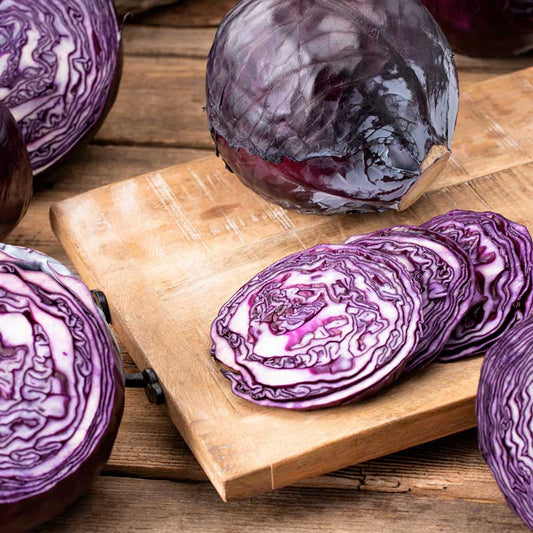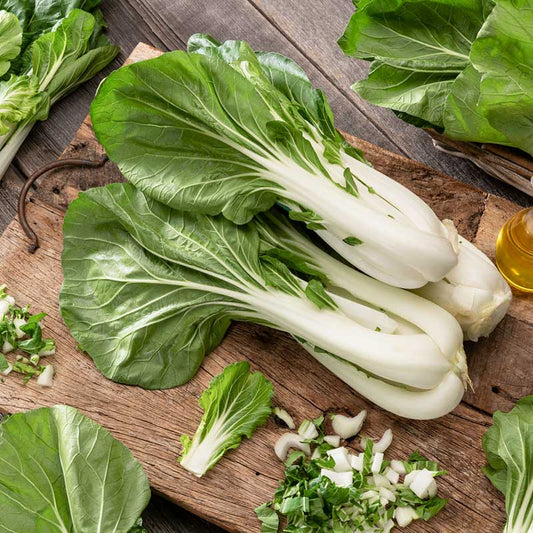-
main-collection-product-grid

Cabbage Seeds (Organic) - Red Acre
Purplish color proves rich in vitamins and antioxidantsCabbage Seeds (Organic) - Red Acre
Purplish color proves rich in vitamins and antioxidantsRegular price As Low As $6.99Regular priceUnit price per -
main-collection-product-grid

Cabbage Seeds (Organic) - Pak Choy White Stem
Also known as Bok Choy, cold tolerant with a mild peppery flavorCabbage Seeds (Organic) - Pak Choy White Stem
Also known as Bok Choy, cold tolerant with a mild peppery flavorRegular price As Low As $6.99Regular priceUnit price per
Growing organic cabbage in your garden
- Adaptable to full sun or partial shade
- Delicate, sweet flavor and rich with vitamins
- A cool season vegetable suited to both spring and fall
- Native to the Mediterranean and in the same family as brussels sprouts
The best organic cabbage selections
Green and red cabbage are among the most prolific cool-season crops, as they are dependable, healthy, and excellent raw or cooked. Gardeners may cultivate two organic cabbage crops every year, since they thrive well in the spring and again in the fall, and they are easy to grow from seed. All of the organic cabbage varieties sold by Eden Brothers are at their peak in late autumn, when they sweeten somewhat with a little frost.
Most of us are picky about which cabbages we cultivate in our gardens, because huge solid heads take up more space than other crops but reward hard labor with substantial, nutritious rewards. Eden Brothers' Charleston Wakefield Cabbage Seeds and Copenhagen Market Cabbage Seeds are two of our most popular green cabbage seed cultivars. Alternatively, consider our Red Acre Cabbage Seeds, which have greater amounts of vitamins A and C than other cabbage varieties with a vibrant color that looks great in the garden and on the plate.
Starting organic cabbage seeds indoors
Organic cabbage seeds should be planted six to eight weeks before the latest spring frost date indoors. Place the seeds in direct sunlight or, if required, beneath a grow light. The ideal soil temperature for growing cabbages is 60 to 65°F. Plant three to four seeds at a depth of 1/4 inch. Harden off and transfer seedlings outside with approximately 24 inches between plants when they reach three to four inches tall, or two to three weeks before the last expected spring frost. Choose a location with plenty of sunlight and friable, well-draining soil.
Cabbage plants need around two inches of water every week to be healthy. Cabbage should be harvested after around 70 days, or when the heads have reached the required size and firmness. With a sharp knife, cut your organic cabbages at the base and remove any yellow leaves, immediately storing them indoors or in the shade.
Cooking with organic cabbage
This leafy plant is grown for its densely leaved heads, which are frequently utilized in a variety of culinary applications. Cabbage can be eaten raw, pickled, fermented, steamed, stewed, sautéed, or braised.
For more information about planting, growing, and caring for organic cabbage seeds, see the Cabbage Seeds Planting Guide.

